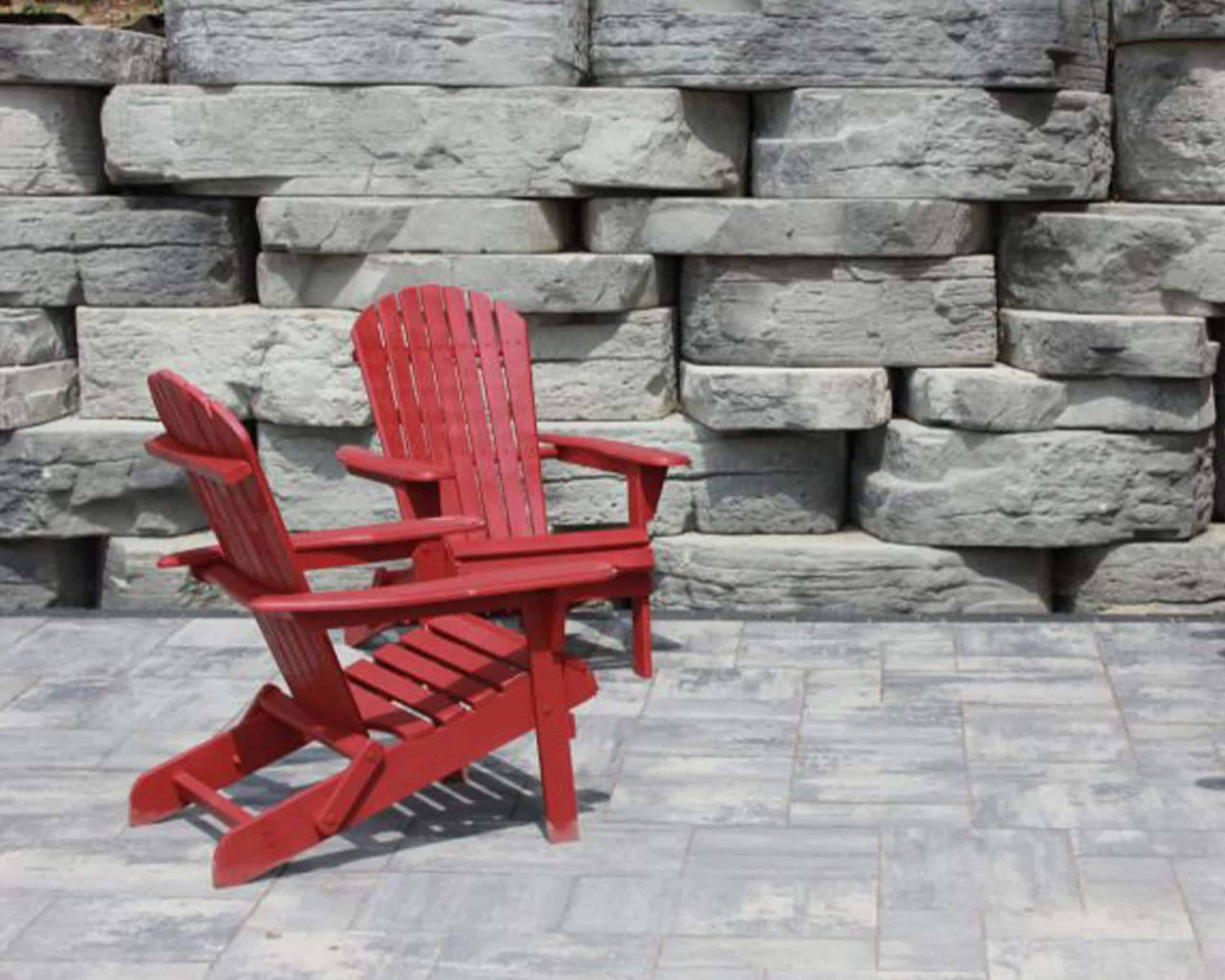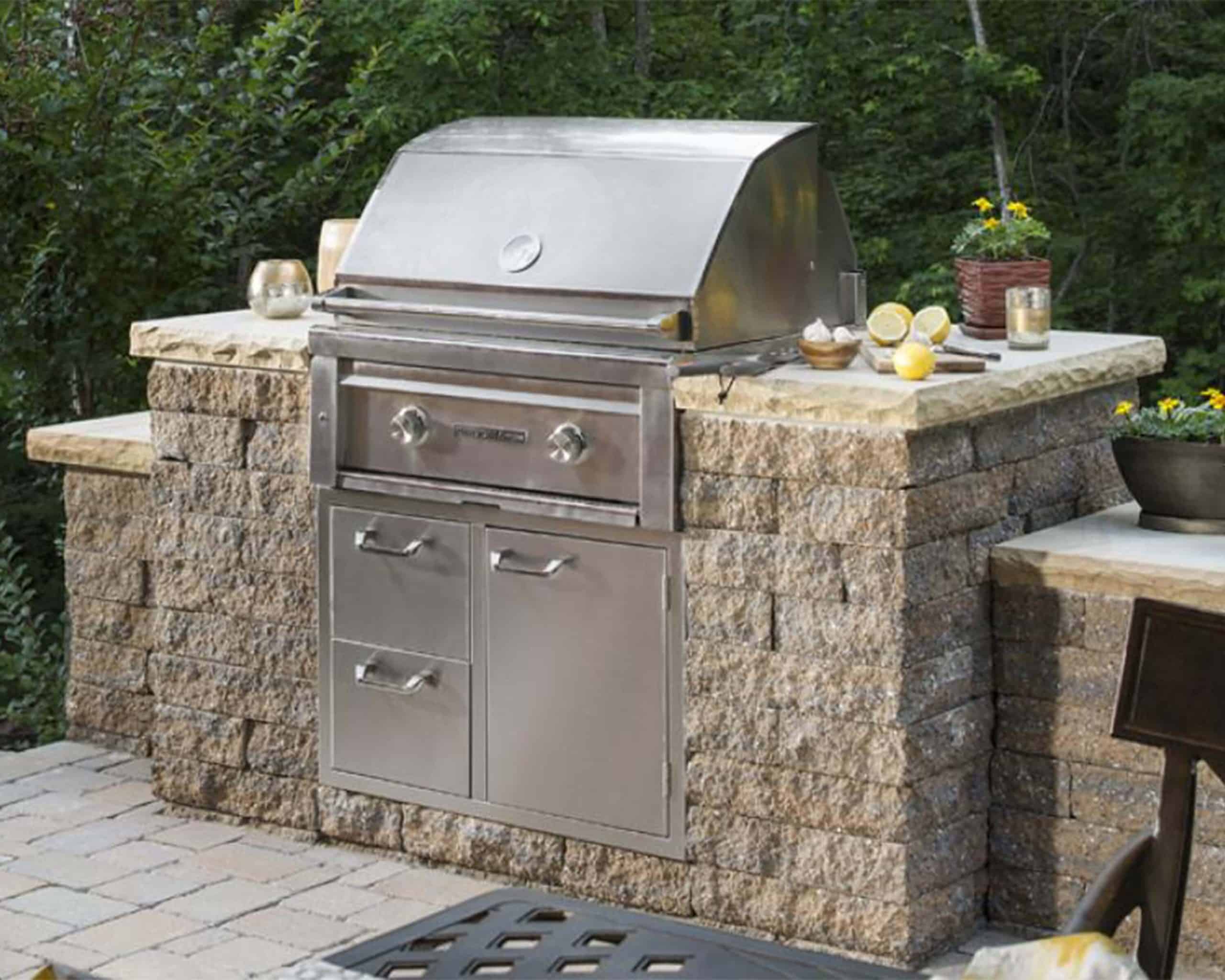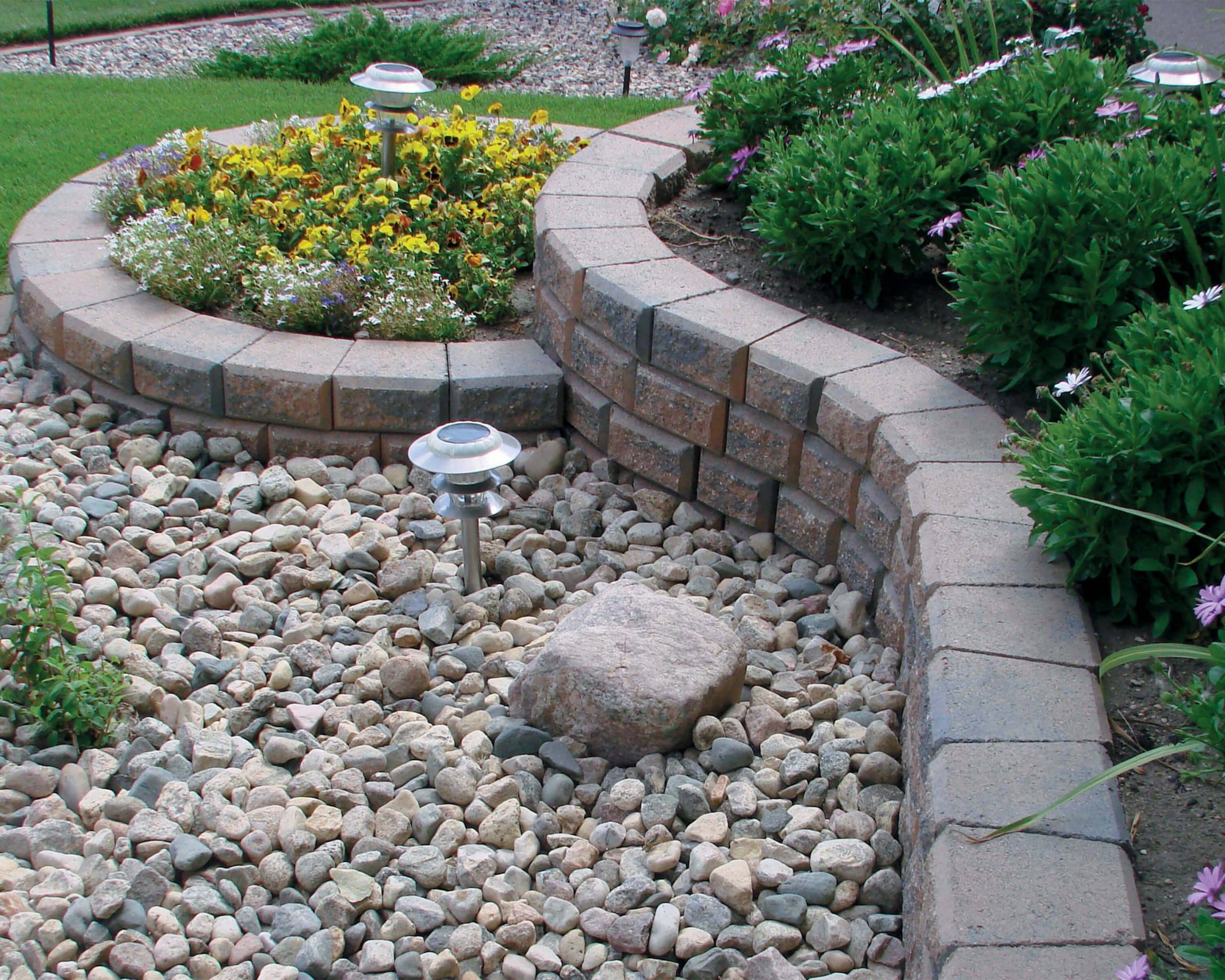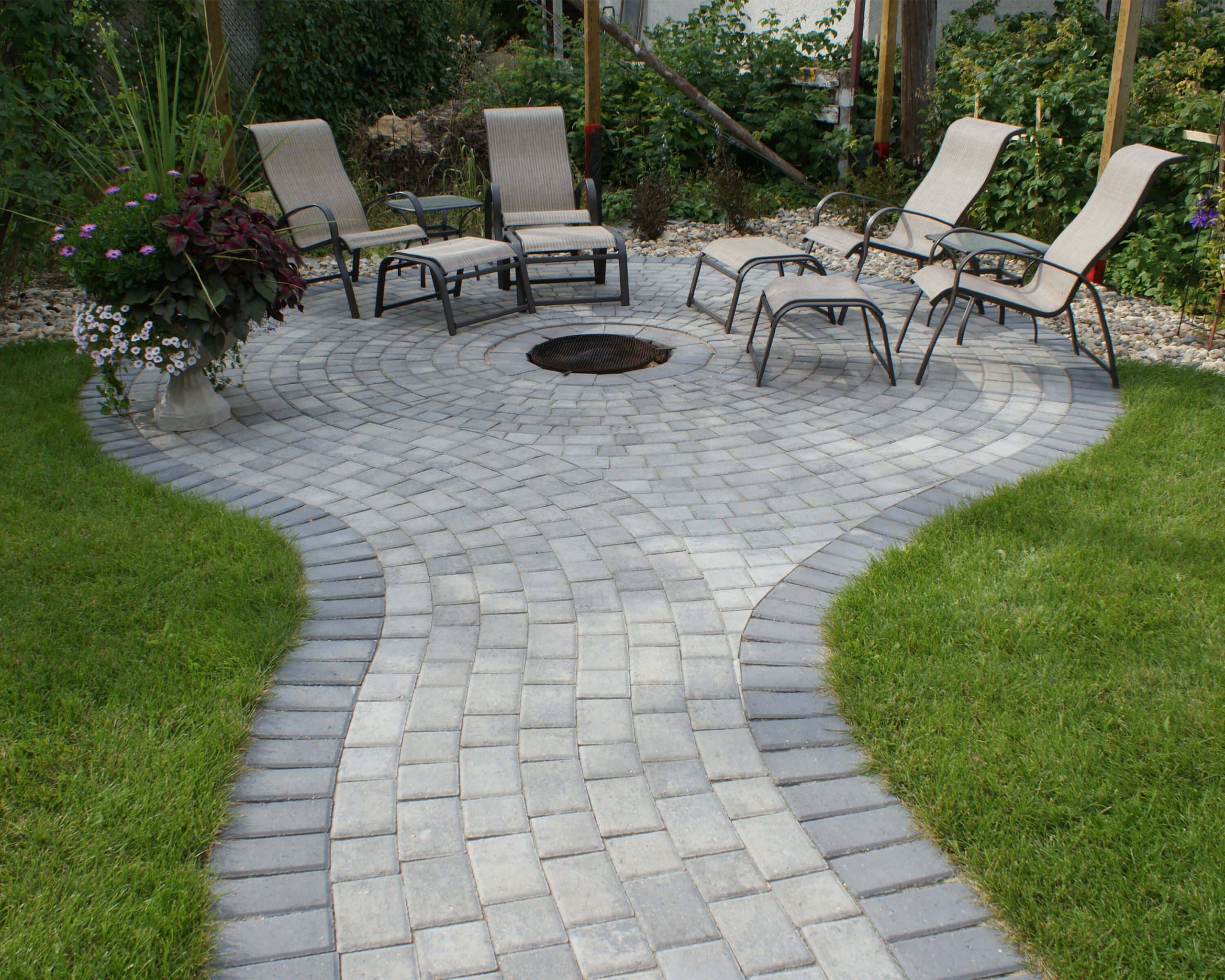Brad Thomson, Sales Director at Oldcastle, points to the building of retreats such as outdoor kitchens and “oasis-style spaces” as a reason for increases in hardscaping. Homeowners, he says, are investing more in their houses and yards over traditional vacations.
Curb appeal also has played a big part, says Ken Scott of Brown’s Concrete Products Ltd. in Sudbury, Ont. “Recent reports indicate that landscaping and hardscaping can add up to 12.7% to a home’s value. In real dollars that equates to over a $38,000 increase on a $300,000 home,” he says. “Not to mention that a well-landscaped yard increases the interest in the property and results in a quicker sale. Realizing a very real return on your landscaping dollars makes the homeowner’s original investment an easier decision to make.”
Concrete as a product category is on the upswing, says Philippe Girardin, Sales and Marketing Director and co-owner of Patio Drummond Ltée. in Drummondville, Que. Girardin adds, though, that there’s been a shift in the way homeowners are using concrete. Over the past three to five years, he has witnessed concrete use move increasingly from driveways out front to backyard applications such as slabs, pavers and more.
“The trend is the bigger the better, so we’ve seen the sizes of slabs and pavers getting bigger and bigger,” Girardin says. He says concrete patio stones are following design and décor trends: “Cleaner lines, smooth finish, very linear. Definitely, the shift is going bigger and cleaner.”


That is, except for when it’s not. Girardin notes that textures that imitate different materials are becoming popular as well such as those with wood-grain texture. “It’s for people who are looking for a change. They do like the look of wood, but some- times the maintenance of wooden decks or patio is something they don’t want to deal with anymore.”
Thomson echoes the trends saying he sees popularity coming in the forms of “linear shapes, monochrome colours and smooth textures, plank style pavers and slabs, (and) larger elements being used in the construction of the spaces.”
Textures have become a very important part of the design of outdoor space, Scott says. “Concrete products are now designed to replicate natural stone while offering the advantage of a manufactured product where quality can be controlled and installation can be simplified by the product design team.”
In his home province of Saskatchewan, Russ Lebell, Director of Sales for South Saskatchewan at Cindercrete Products Ltd. sees a similar trend towards larger, thicker slabs. His com-
pany’s sweet spot is in
He also sees the tumbled, artificially weathered look popular in years past on its way out, making way for a smoother appearance of pavers and wall systems. It’s good news for producers, contractors and homeowners alike, since tumbling increases costs.
Scott also sees the trend of artificial antiquing dropping off.
“There was a time where concrete was manufactured and went through an antiquing process to ‘warm’ its appearance and create a softer look,” he says. “Today that secondary process has been replaced by creating the softer, warmer looking product in the original manufacturing process.”
MORE THAN JUST LAYING PATIO STONES
“I think the biggest trend that we are seeing in outdoor spaces is that the spaces are much more multifunctional than they once were,” Scott says. “The simple patio of a decade ago has been replaced by the outdoor living room and outdoor kitchen. These are spaces that have become an extension of the home. They are fully outfitted with electricity, running water and all amenities that one would find in the home.”
Girardin concurs. “The biggest as people are investing more in their backyard is different uses for concrete. Traditionally it was used to cover an area or floor to walk on, but what we’re seeing is people are using concrete for firepits, which is our biggest growing category,” he says. “They are making outdoor barbecues out of concrete. They are making benches out of concrete. So, you see a lot of different uses than even five years ago.”
While often easy-to-install, as a heavier product, concrete often represents an opportunity for contractors, since many home- owners and DIY weekend warriors may lack the inclination, or the tools needed, to take on the project. Girardin notes it’s also a product category where it is possible to do a great, professional job without being a hardscaping guru. “That’s OK, because you can make a product look as great as a professional landscaper without being a professional landscaper.”
Depending on the region, some outdoor concrete applications are falling off, for example, some municipalities ban or have strict rules around backyard fire pits. Still, Lebell sees a great opportunity for those contractors who spend the

time and energy to be expert with concrete. “There’s a lot of contractors that do no advertising,” he notes. “I’ve got guys in Regina and Saskatoon that don’t and are already booked for the year when coming into it.”
Lebell also sees an opportunity — or increasing demand — for contractors to overlap and expand services. “From what we’re seeing in our market, the dedicated hardscape contractors are having to open up a little more of what they do. Rather than just doing a paver patio and some walls, they are now doing additional softscaping.”
Paying attention to the changes in product and the mar- ket is crucial. “As product offerings change, a need for edu- cation and training of the trades has been created,” Scott says. To meet this Browns has introduced a contractor edu- cation program to keep the tradespeople current on proper installation techniques.
“As designs change, so does the installation method and some of the standard practices of the past simply don’t apply. With many of the new designs featuring larger scale products, I am seeing a trend with the contractors improving their tool assortment and including lifting devices to accommodate the increased product weights.”
The opportunities don’t end with installation. Hardscaping offers contractors several excellent reasons to come back again and again, Thomson notes. “Contractors have a great opportunity to offer clients [added] value in their services, like yearly cleaning, multiple-phase projects over one or two years, use of technology design tools, (and the) upsell to premium products.” —

